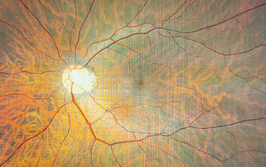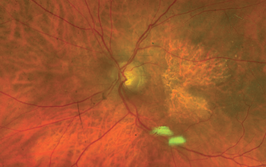I don’t smoke. Neither did my parents and nor do my children. But that’s not enough for me: I am on a mission to keep my patients from smoking. And I am looking for other ophthalmologists to do the same.
It is well known that smoking is damaging to the entire body. Over the last few decades, there has been indisputable proof that smoking causes an epidemic of devastation, including markedly increased prevalence of multiple cancers, respiratory and cardiovascular diseases.
Inexplicably, most people believe their eyesight is immune from the scourge of smoking. As ophthalmologists, we are acutely aware this is far from the truth. Smoking is associated with significantly increased prevalence and ocular pathology in the three leading causes of blindness in adults (macular degeneration, glaucoma, and diabetic retinopathy). Worse yet, smokers can be affected at a younger age and more severely than non-smokers.
Yet many ophthalmologists are hesitant to bring up the topic of smoking, concerned the patient may not be receptive or will consider the subject off limits. Others may be frustrated by the lack of patient action and wary of investing time, effort and energy – or they may question whose role it is to bring up the hazards of smoking. Should it be a topic for a primary physician to broach or a social worker?
In my 30 years of experience as an ophthalmologist in South Florida, I have discovered a consistent pattern. Ninety-nine percent of my new patients are unaware of the effect of smoking on the eyes, and lack important information on how smoking causes an increased prevalence eye disease. They are also unaware that visual acuity impairments often occur at a younger age and in a more expedited fashion in smokers. When I proceed to explain about smokers having a significantly increased blood level of carboxyhemoglobin that causes retinal hypoxia – almost the equivalent of the smoker partially strangulating him or herself – I often hear audible gasps.
I wish I had kept statistics on the number of patients who came into our office as smokers but no longer smoke. If my staff and I had to guess, the estimate would hover at the 50 percent mark. We think a very small percentage stop when they first hear the message, and others may wait until they have heard my ‘doom and gloom’ smoking statistics a few times. The best results take place when a family member is diagnosed with macular degeneration, glaucoma or diabetic eye disease. The most resistant are those who have been smoking for decades and still have excellent vision with no posterior segment pathology. They are far less likely to stop smoking, assuming incorrectly they are immune from ocular damage.
As a physician, I see my role not only as a diagnostician and treatment provider but also as an educator. My philosophy is the more your patients know about ocular health and preventative care, the greater your chances of reducing systemic and ocular morbidity as well as mortality. I also believe in persistence; if I do not succeed the first time, I keep trying as it is part and parcel of helping patients save their eyesight.
So fellow ophthalmologists, I strongly encourage you to give the stop smoking push a new try. If one approach does not work, view it as a challenge and use a different one on the next visit. Then track the results, not over months but years, and watch the numbers plummet. It may not be dramatic, but it is enough to know that you did your best to change the course of eye disease in your patients.
Mendelsohn has over 30 years’ experience as a practicing ophthalmologist serving the South Florida community, and is one of the premier cataract surgeons in the Fort Lauderdale/Miami area. A leader in laser procedures for glaucoma and cataract surgery, he has published a number scientific publications. His mission is to increase awareness of serious eye disease.
He is also on Twitter - twitter.com/myeyesurgeons













